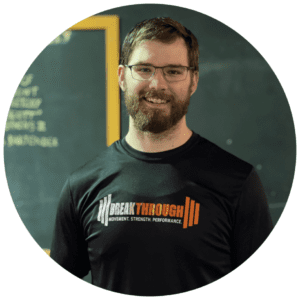In today’s age it seems as if the only thing to do with exercise is to find out how much harder we can make it.
How much weight can you lift? How fast can you go? How crazy can you make it look? The big flashy things are the ones that catch most of our attention, which is understandable. Everyone wants to see the next spectacle. It ends up being the next, “Did you see this?” kind of deal.
That doesn’t have to be your workout, and realistically it isn’t most people’s. Today we’re going to be on the flip side of things, and we’ll look at how to simplify your workout. To a degree regression can be seen as making an exercise “easy,” but really it should be seen as finding a suitable range at which you can work with, not a depletion of work ethic.
Here are some simple ways to regress a workout!
●Use less weight.
Don’t be afraid to lighten the load. Sometimes ego can get the best of us, and we’ll want to push it to the limit, but it can also be pushing yourself into taking time off training because you got hurt.
Not that lifting heavy things is bad, but when you’re struggling to complete a workout then some adjustments have to be made. You can go down just a few pounds and see how things feel from there.
If need be, keep dropping until you can feel like you’re doing well enough to test back up.
●Do less reps.
This is a very similar concept to reducing the weight. Getting less reps in is another way to gauge how you feel during an exercise. If you’re good around reps 5-7 consistently, but reps 9 and 10 start to hurt, it’s fine to work from that 5-7 range for a while.
Soon you’ll find yourself working on sets of 8. Then over time you’ll be hitting 9 and 10 with no problem.
Getting less reps gives you more of a chance to work in an optimal range!
●Give yourself more rest time.
Make rest time between sets, between movements on a circuit, etc.
Resting will give your body just a little more time to recover before hopping back in. You don’t always have to rest the minimal amount. If you feel like most of the time you’re not finishing all the way on your workouts, then try letting your body recover longer between movements or sets. This will still give you the chance to test yourself, but after you’ve mustered up enough energy.
Allow yourself to recoup.
While these three are very general, they’re the ones that are first seen when learning to progress something, so they can also be used when regressing.
Regressions can be made at any time. Any of the three points we covered today can be touched on, but it can go deeper than that. For example, let’s say you are having a difficult time with squats. A regression could be learning to squat to a high box with no weight instead of going low on a back squat with heavy weight. Over time you could learn to make it more challenging with lower squat depths, adding weight, time under tension, and many more variables.
The biggest thing to take away from this is that regression shouldn’t be accompanied with the feeling of shame or that you’re not good enough. It’s finding what works best for you and allows you to train healthier, which will yield significantly higher results. Learning how to regress a workout or movement is equally important as learning how to progress it. Smart training is strong training. Listen to your body, adjust, and have fun.
About the Author:

Jacob Mills is an experienced fitness professional who focuses on fitness, sports performance, pain mitigation, and movement. Jacob’s personal experiences and passions led him to pursue a career in fitness where he seeks to provide the highest quality coaching and to create the most positive impact on clients’ lives.
As a child, Jacob was always fascinated with working out and what it could do for your body. That interest grew after joining his high school football team when training became routine. From there, he found myself powerlifting while studying sports performance in college. Before graduating from the University of Cincinnati, he interned at Breakthrough, which led to coaching there and providing strength and conditioning for athletes. Since beginning his career at Breakthrough, he has also found himself expanding into the world of movement, pain mitigation, and recovery. He loves working with every type of client; from those working on weight control, to the person focusing on their health or recovery assistance, and even the beginner still discovering what their goals are. Because of his training background, he most enjoys working with athletes in need of strength and conditioning or pain mitigation.

